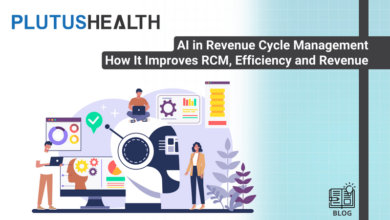Maximizing Business Growth Through Technology and Strategic Planning

In today’s fast-paced business environment, leveraging the right technology and strategic planning is essential for growth. From small startups to large enterprises, businesses are constantly seeking ways to optimize their operations, enhance customer experiences, and, ultimately, drive profitability. One of the key aspects of this process is integrating technology solutions that streamline processes and enable smarter decision-making.
In this post, we’ll explore how technology and strategic planning can work hand in hand to maximize business growth. We’ll focus on critical areas like supply chain management, marketing, and overall business functions, highlighting the tools and strategies that can help your business thrive in a competitive landscape.
The Role of Technology in Business Growth
Technology has become the backbone of modern businesses. From automating routine tasks to providing real-time insights, technology solutions enable companies to operate more efficiently and effectively. Here are some key ways technology contributes to business growth:
1. Automation and Efficiency: Automation tools, such as Warehouse Management Systems (WMS), can significantly reduce manual labor and human error. WMS solutions streamline inventory management, order fulfillment, and shipping processes, ensuring that products move through the supply chain smoothly. This efficiency frees up resources that can be redirected toward other growth-oriented activities, such as product development or customer acquisition.
2. Data-Driven Decision Making: The ability to collect, analyze, and act on data is a game-changer for businesses. Advanced analytics tools provide insights into customer behavior, market trends, and operational performance. By leveraging these insights, businesses can make informed decisions that drive growth. For example, understanding which products are in high demand allows for better inventory planning, reducing the risk of stockouts or overstocking.
3. Enhanced Communication and Collaboration: Effective communication across departments is crucial for business success. Utilizing ChatGPT prompts for every business function can facilitate this by helping teams generate reports, draft emails, and provide customer support efficiently. These prompts can assist in ensuring consistency in messaging and improving collaboration, leading to more cohesive strategies across the organization.
4. Customer Relationship Management: Technology solutions like CRM systems allow businesses to manage customer interactions effectively. By tracking customer preferences, purchase history, and feedback, companies can tailor their marketing efforts to meet individual needs. This personalized approach enhances customer satisfaction and loyalty, leading to repeat business and positive word-of-mouth referrals.
5. Online Visibility and Marketing: In the digital age, having a strong online presence is crucial for attracting and retaining customers. Tools that help increase your online visibility, such as SEO and social media management platforms, are essential components of a growth strategy. By leveraging these tools, businesses can ensure that their brand is visible to potential customers, driving traffic to their website and ultimately increasing sales.
Strategic Planning for Growth
While technology is a powerful enabler of growth, it must be paired with strategic planning to be truly effective. Strategic planning involves setting clear goals, identifying opportunities and challenges, and creating a roadmap for achieving success. Here are some key aspects of strategic planning that can help maximize business growth:
1. Goal Setting and Alignment:
Successful businesses have a clear vision of what they want to achieve. Setting specific, measurable, achievable, relevant, and time-bound (SMART) goals provides direction and focus. Using OKR software can further enhance this process by helping to set and track these goals effectively. These goals should be aligned with the company’s overall mission and values. For example, if a company’s mission is to provide exceptional customer service, one of its goals might be to achieve a certain customer satisfaction rating within a specified time frame.
2. Resource Allocation: Strategic planning involves determining how to allocate resources—whether financial, human, or technological—in the most effective way. This requires a thorough understanding of the company’s strengths and weaknesses, as well as the opportunities and threats in the market. By prioritizing resources in areas that have the most growth potential, businesses can maximize their return on investment.
3. Risk Management: Every business faces risks, whether they’re related to market conditions, competition, or internal factors. Strategic planning involves identifying potential risks and developing contingency plans to mitigate them. For example, a company that relies heavily on a single supplier may need to diversify its supply chain to reduce the risk of disruption.
4. Continuous Improvement: The business landscape is constantly changing, and companies must be agile to stay competitive. Strategic planning should include a commitment to continuous improvement, whether it’s through adopting new technologies, refining processes, or exploring new markets. By regularly reviewing and adjusting their strategies, businesses can adapt to changes and seize new growth opportunities.
5. Customer-Centric Approach: A successful growth strategy is built around the customer. Businesses that understand and anticipate their customers’ needs are better positioned to deliver value. This customer-centric approach should inform every aspect of the business, from product development to marketing and customer service. By keeping the customer at the center of their strategic planning, businesses can build strong, lasting relationships that drive growth.
Integrating Technology and Strategy
The most successful businesses are those that integrate technology and strategic planning seamlessly. This integration ensures that technology solutions are aligned with the company’s goals and objectives, maximizing their impact on growth. Here are some ways to achieve this integration:
1. Technology as a Strategic Enabler: Rather than adopting technology for technology’s sake, businesses should view it as a strategic enabler. This means selecting technology solutions that support the company’s goals and provide a competitive advantage. For example, a WMS solution that integrates with the company’s e-commerce platform can streamline operations and enhance the customer experience, driving growth.
2. Cross-Functional Collaboration: Effective integration of technology and strategy requires collaboration across departments. For example, the IT department should work closely with marketing and sales to ensure that technology solutions support the company’s customer acquisition and retention goals. The use of ChatGPT prompts for every business function can support this collaboration by providing guidance and templates for various tasks, ensuring consistency and efficiency across the board.
3. Measuring Success: To ensure that technology and strategic planning are delivering the desired results, businesses should establish key performance indicators (KPIs) and regularly track their progress. This data-driven approach allows companies to identify areas for improvement and make adjustments as needed.
Conclusion
Maximizing business growth requires a combination of technology and strategic planning. By leveraging technology solutions like WMS systems, AI-driven ChatGPT prompts for every business function, and tools that increase your online visibility, businesses can streamline operations, enhance customer experiences, and drive profitability. When paired with a solid strategic plan that sets clear goals, allocates resources effectively, and prioritizes the customer, these technology solutions become powerful engines of growth.
As the business landscape continues to evolve, companies that integrate technology and strategy will be better positioned to seize new opportunities and achieve long-term success. Whether you’re a small business or a large enterprise, the key to growth lies in your ability to adapt, innovate, and execute your plans with precision.


